The duck is a bird that’s been domesticated since prehistoric times. They are found in most water-rich regions around the globe.
From the Americas to Australia and Europe to Asia, waterfowls are found in every climate. Though they look cute and cuddly, these creatures are really tough.
In fact, some species are able to survive through a whole lifetime as a fully grown adult. Today, we want to take you on an exploration of the 10 most beautiful ducks in the world.
There are countless species of ducks, so for this list, we focused on species that are particularly charming or simply gorgeous.
These ducks represent an array of characteristics and habitats, so while you will not see all the birds in one place, you will get a good idea of the different types of ducks.
So, what are you waiting for? Let’s explore our favourite waterfowl. If you have ever had a pet that just looks so cute, this is what you’re looking for?
Beautiful Ducks 🦆 King Eider (Somateria spectabilis)

Scientific Classification of the King Eider Duck
- Kingdom of the king eider: Animalia.
- Phylum of the king eider: Chordata.
- Class of the king eider: Aves.
- Order of the king eider: Anseriformes.
- Family of the king eider: Anatidae.
- Genus of the king eider: Somateria.
- Species of the king eider: S. spectabilis.
- Binomial name of the king eider: Somateria spectabilis.
Description:
The King Eider is one of the least-known seabirds. The King Eider’s range is restricted to the coasts of the Northern Hemisphere.
It breeds in the high Arctic in wintering areas from the Far North to the Northeast. It prefers fresh water and is a rare vagrant to Europe.
In fact, more than 80 percent of all King Eiders that are recaptured after a first capture come from other parts of the world (the remaining 20 percent are usually wild birds from the Arctic).
King Eiders are easily recognizable because of their striking, bright white breast and tail with a distinctive black back.
Some experts say that the King Eider, who is one of the smallest seabirds, is the most handsome seabird (some other birds may be much more handsome.
But King Eider is the most beautiful). They are excellent flyers and are also very agile.
Habitat:
King Eiders breed on bogs and meadows, mainly in bogs in the northern parts of their range. They also nest on marshes and on lakes, as well as on islands.
Size:
Adult King Eiders usually weigh between 15 and 18 pounds. They are medium-sized, with a wingspan of 66–72 inches. They are the smallest of the ducks and swans.
Diet:
The diet of the King Eider varies depending on the breeding season. Most of the food they eat is invertebrate.
Some important prey are shrimps and other crustaceans, water fleas, and aquatic insects. The King Eider feeds in coastal waters and wetlands.
Behaviour:
King Eiders are social birds. They nest in colonies of two to three pairs. Male King Eiders look for a nesting place where there are a lot of small branches.
The female lays two eggs (which are sometimes fertilised by the male). After laying the eggs, the female and the male take turns incubating them. The eggs hatch after 3–4 weeks.
The chick starts growing after 2 weeks and after 6 weeks is able to fly. The chicks are able to eat at day 6, and they are able to find food independently at 9 weeks.
The average age at which the young King Eider can start reproducing is about one year. Young King Eiders often migrate along with their parents. But they can stay within their range if they like it.
Range:
The King Eider has a range restricted to the coasts of the northern hemisphere. Its breeding grounds are the high Arctic (Northeast of the Bering Sea), Greenland, and the North Pole.
It nests in the Northeast of Alaska. It winters along the coasts of Northeast Siberia and Northern Japan, on the coast of Alaska, in the Aleutian Islands, and in the Gulf of Alaska.
Migration:
King Eiders migrate north in the spring. They usually leave in May. They migrate south in autumn, arriving in wintering areas in March.
Reproduction:
The King Eider usually breeds in the northern areas of the temperate zone. They usually have two clutches of two eggs a year.
The average number of eggs laid is two. The incubation period is about 37 days. The brood period lasts between 45 and 90 days.
Courtship:
The males of the King Eider court the females. They call to each other by making a harsh hooting sound.
After that, they approach each other in a wading way and then fly together. Once the male has courted a female, he stays by her side while she incubates the eggs.
Mating:
The birds of this species are known for their long-term partnerships. The breeding season lasts 6 months and, in that period, a pair mates several times.
Nesting:
The nesting season starts in late May and lasts until late July, depending on the location. The male and female King Eider share in incubating the eggs. They find the nest on their own or together.
The nest is an ellipsoid that looks like a tunnel, with a diameter of 3 inches and 3–5 feet deep. The King Eider has the ability to create very big nests, but they usually use a little more shallow ones.
It is mostly made of grasses, plants, and moss. The King Eider usually chooses a small cavity to build its nest, which is usually a part of a beaver’s lodge or a hole from a tree hollow.
The eggs of the King Eider hatch out in late July. Both parents share in caring for the chicks.
Hatching:
The King Eider usually lays two eggs (on average), which have a blue-grey appearance. Sometimes the eggs are fertilised by the male. The chicks start to hatch on day 7.
It takes about 8 hours to hatch one egg. After hatching, the young King Eider begins to receive food.
The female and the male give food to the chicks every 1.5 hours. The young also learn to eat on their own by the 10th week.
Broods:
The King Eider usually raises two broods a year. In the first brood, the parents feed the young until day 50. The parents take turns being responsible for feeding the chicks.
In the second brood, the young get food for 40–80 days, until they are mature enough to feed themselves.
Chicks can fly at the age of 10 weeks and are able to swim at the age of 11 weeks. They are able to swim with their parents at the age of 18–19 weeks. They can dive at the age of 30–40 weeks.
King Eider Population:
In 2021, a group of volunteers from the Canadian Wildlife Federation and Ducks Unlimited Canada conducted a population survey.
And estimated the Eider duck population at about 2.4 million individuals. A 2015 paper estimates the global population as 300 to 400 million.
How long does a king eider live?
The king eiders live between 5 to 12 years.
Where were King Eiders found?
The King Eider is found in North America, specifically in the Arctic regions of Alaska, Canada and Greenland. They are migratory birds and can be found near the coasts during the winter months.
Why is it called the King Eider?
The King Eider’s name is derived from its resemblance to the much larger Common Eider.
These birds are notable for their elaborate courtship displays, which include aerial acrobatics and calling in unison.
What does a King Eider look like?
The males are unmistakable in breeding plumage, with an iridescent black head, white breast and belly, and striking green and purple neck and back.
Females are duller, with a brown head and grey body.
Eurasian Teal (Anas Crecca)
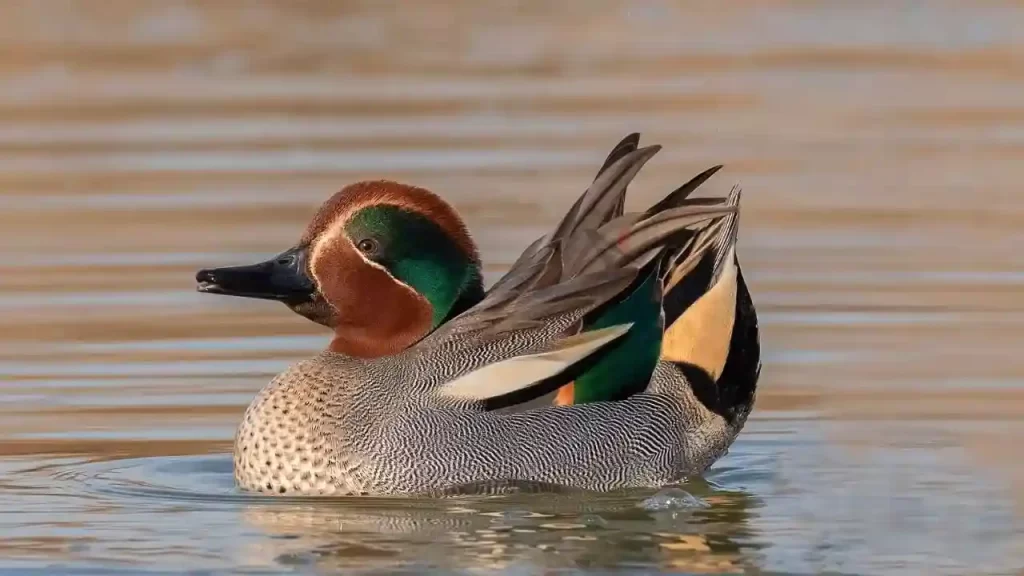
Scientific Classification of the Eurasian Teal:
- Kingdom of the eurasian teal: Animalia.
- Phylum of the eurasian teal: Chordata.
- Class of the eurasian teal: Aves.
- Order of the eurasian teal: Anseriformes.
- Family of the eurasian teal: Anatidae.
- Genus of the eurasian teal: Anas.
- Species of the eurasian teal: A. crecca.
- Binomial name of the eurasian teal: Anas crecca.
Description:
Eurasian Teal is a rare and beautiful duck, native to Asia. It is also known as “Golden Duck”, “White Teal”, “Teal” and “Teal Duck”.
It is a large duck with a length of 50 cm, a wingspan of 60 cm, a weight of 30-35 kg, and a wing area of around 120 square metres.
The Eurasian Teal has a bright yellow body and neck, and has a white head, and a red bill. They feed on small fish, crustaceans, insect larvae, and other aquatic invertebrates.
They can also be seen using land and water to feed and get their water, and are very good parents and feeders.
Distribution:
The Eurasian teal has an extended distribution, from Northern Europe and Siberia in the east to Korea and Japan in the west, through Central Asia and South Asia, extending into the western hemisphere.
In the Old World, it can be found in the eastern half of the Asian continent from Turkey to Korea.
Japan has the most breeding pairs of the Eurasian teal, while Russia and Ukraine both have about the same amount.
In the Americas, the Eurasian teal is distributed across southern Canada, the United States and the Western Hemisphere from southern Mexico to Argentina. It is now extinct in Cuba.
History:
The Eurasian teal is migratory. Its winter breeding range is in the Eurasian part of the Northern Hemisphere.
The European teal typically breeds in Europe, Asia and northern Africa from November to January, and typically winters from May to July.
In the United States, the Eurasian teal breeds from October to November, and winters from April to May. In Canada, its breeding season begins in October and is finished by January.
In Mexico, it breeds in March to April and winters in December and January. In Central America, the teal breeds from November to March.
The Siberian teal breeds from August to September and winters from May to July. In South America, the breeding season begins in January to February and is finished in March to April.
It winters from September to October. In Brazil, the breeding season begins in February, and is finished in March.
It winters in April to June. In Argentina, the breeding season begins in April and is finished by June. The wintering season is from September to March, and includes the Andean highlands.
It is generally found in a wide range of habitats. In the Old World, its primary habitats include rivers, lakes, irrigation canals, streams, and marshland.
In the Middle East, it is a common resident in open waters and shallow coastal waters. In Western Asia, it is found in rivers, freshwater marshes, and reed beds.
It also occurs in fresh-and salt-water lake, river and marshland habitats in tropical and subtropical regions.
In the New World, it is found in wetlands in southern Canada and the U.S. It also occurs in shallow water marshes, saltwater marsh, lakes, rivers and streams.
In the Caribbean and Central America, it is found in shallow brackish and freshwater wetlands. In the Andes Mountains of South America, it is found in freshwater lakes.
Diet:
The Eurasian teal has a diverse diet, including insects, fish, crustaceans, small mollusks, amphibians, reptiles, small rodents, and seeds, fruits, and berries.
Breeding:
This duck breeds in shallow water. It breeds in dense colonies. In winter, they congregate in estuaries, lakes, marshes, rivers, irrigation canals, and wetlands.
They have a high tolerance for salt. They nest on floating structures, and they nest in large numbers. Courtship is described as quiet.
When breeding, the male and female exchange honks, grunts and clucks. This continues for days. Courtship is described as continuous. Breeding takes place year-round.
The male selects a location for nesting and constructs a floating nest. He builds the nest with mud, sticks, and other debris.
The female selects a nesting location, chooses a nest, then selects an area to scratch the nest. She then builds a nest by adding debris to the base.
They lay a clutch of three eggs, which are incubated for 28 to 32 days. The clutch is then guarded by the male and the female.
The ducklings are altricial, and the nestling period is extremely short, from about 14 to 19 days. At this time, the ducklings are about half the size of the adult.
The ducklings are then fed by the parents. By two weeks, the ducklings can follow the parents, swim, and find their own food.
However, they still remain with their parents until they are at least seven months old. By this time, they are able to fend for themselves and are almost ready to be released.
The ducklings are sexually mature at about two years old. Eurasian teals may be able to recognize their relatives by their vocalisations and movements.
Flight:
In flight, Eurasian teals have a fast, direct flight. Sometimes the teals fly above the water, sometimes they fly along the shore.
Males and females behave similarly, but usually they fly on alternate sides of the shoreline. Teal flight has two beats, the first with a slow wing beat and the second with a fast wing beat.
Teals usually fly at a height of 3 to 8 feet above the surface of the water, although they may fly as low as one to 2 feet above the water.
At the water’s surface, the teal dives to swallow the insects that it finds there.
Conservation:
Eurasian teals have been hunted for sport and for food since prehistoric times. Eurasian teals and mallards have overlapping ranges, recreational hunters often take game from both species.
Hunting pressure on Eurasian teals has caused a decline in their populations, and hunting has contributed to their local extinction in some areas. Eurasian teals are not listed on the IUCN Red List.
Fishers can kill birds in flight by throwing a net with a line attached to it, usually in water.
Although the Eurasian teal is not endangered, it is listed as “Near Threatened” because the number of birds in the wild is less than 10,000 and its numbers have declined.
Eurasian teals are protected under the Convention on Migratory Species.
Eurasian teals are protected under CITES (Convention on International Trade in Endangered Species of Wild Fauna and Flora), Appendix I.
Because the bird is threatened with extinction due to the increase in hunting, trapping, and the use of pesticides.
Status:
The Eurasian Teal is in stable populations. In the Old World, the Eurasian teal population has not declined significantly. In fact, in some areas, the Eurasian teal population is increasing.
In the United States, the population of the Eurasian Teal in the United States is stable. It was listed as a Threatened species in the State of Maryland in 2008.
It is classified as a Species of Least Concern in the other states. The Eurasian teal population in Canada has not declined significantly.
The Eurasian teal population is the most abundant duck in Western Europe. It is now also in Europe’s largest national park, the Ural Mts National Park.
In the New World, the Eurasian teal population is classified as stable. Its population in Argentina is increasing. The species is listed as a least concern species in Brazil.
In Chile, its population has not declined significantly, and the status is unknown in Paraguay. In the United States, the populations of the Eurasian Teal have not declined significantly.
In Canada, the Eurasian teal population has not declined significantly.
Subspecies:
The Eurasian teal has four subspecies, the Eurasian teal (Anas crecca crecca).
The Siberian teal (Anas crecca sibirica), the American Black Duck (Anas rubripes), and the Wood Duck (A. rubripes). In fact, the Mallard was formerly classified as the Eurasian teal.
American Wood Duck (Aix Sponsa)
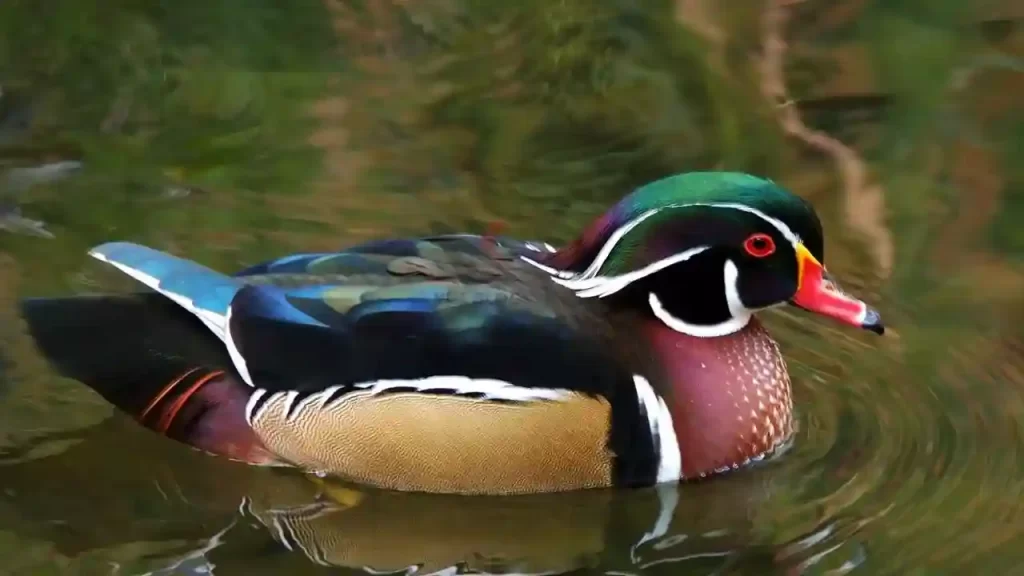
Scientific Classification of the American Wood Duck:
- Kingdom of the American Wood duck: Animalia.
- Phylum of the American wood duck: Chordata.
- Class of the American wood duck: Aves.
- Order of the American wood duck: Anseriformes.
- Family of the American wood duck: Anatidae.
- Genus of the American wood duck: Aix.
- Species of the American wood duck: A. sponsa.
- Binomial name of the american wood duck: Aix sponsa.
Description:
The American Wood Duck is a medium-sized species of duck. Its head and neck are slightly longer than its body, but the length of the head is usually shorter than in most ducks.
Its body is brown and its flight feathers are a dark greyish blue. The bill is long and slender. The American Wood Duck is not considered aggressive or dangerous.
American Wood Ducks make their homes in both deciduous and coniferous forests, although their range is limited to the lower northern USA.
They are considered a common bird, but they are not considered a common winter visitor to many of our northern wetlands and lakes.
The typical winter range is from the upper Hudson Valley down to New York, Delaware and down the west coast to California.
As a winter resident they are found in forested wetlands, ponds, lakes and riverine wetlands.
Diet:
The American Wood Duck is omnivorous. During the spring and summer, it is a typical bird for waterside habitats. It takes a varied diet, with insects being a primary food source.
These are supplemented by seeds and fruits, most of which are eaten in the early spring before the young leave the nest.
It also eats a significant amount of mollusks and small fish, and occasionally small mammals. In the fall, they move to land as the young leave the nest.
Habitat and Range:
Wood Duck is a northern species. The birds breed in Alaska, and migrate south in spring and autumn.
Wood Duck winters in the Gulf of Mexico and on the Central and South American coast (Caribbean islands).
Habits:
Usually seen near water, Wood Duck is a skulking, secretive species, but it is a clumsy walker and flyer. Males are polygamous. Females are sedentary, and sometimes migrate with their mates.
The nesting season is June-August in the American south. It is somewhat later in the Gulf of Mexico.
In the southern hemisphere, Wood Duck is the only duck that nests in trees, not in a hole in the ground.
The nest is a structure built by both parents. The female builds it in the winter; the male places the nest in the tree.
There are usually 3 or 4 ducklings in a clutch, and all young are guarded by both parents. The eggs are incubated by both parents and are covered in down feathers.
Behaviour:
The American Wood Duck is a gregarious duck, and usually feeds in groups, both adults and young.
They usually swim and feed on the water surface. Ducklings may be seen on land with their parents, and juveniles are especially fond of eating watercress and blue-green algae, usually in water.
A duckling is very social, and follows its parents to and from feeding. The call of the Wood Duck is a series of liquid, whistling notes.
Reproduction:
The Wood Duck is sexually monomorphic. The pair defends a territory and may stay for long periods in a single spot.
Females will not mate with territorial males (males are often accompanied by several females). The female builds her nest on a suitable site in a tree or on the ground near water.
The male may return to the same nest in subsequent breeding seasons. A female usually lays two clutches of eggs per breeding season.
The male incubates the eggs for 16-17 days, the female for 21 days, but only the female feeds the young. Sometimes one or both of the parents also feeds the ducklings.
A duckling will usually stay in its natal area until the following spring.
Wood Duck are polygamous, and usually mate with several partners, although a single male will often raise several broods in a breeding season.
A new male can arrive on a territory early in the season (September) and will sometimes succeed in the male-male competition for females. The female usually lays two clutches of eggs in a season.
All young are raised in the nest by both parents, and ducklings accompany parents to the water and stay with them for some time.
Ducklings have very short legs, and will move through a swamp by swimming, and they will sometimes follow their parents on land.
Breeding:
The clutch size of the Wood Duck is two, but this may vary within a season. Wood Duck sometimes raise broods that are 3-4 ducklings long. A female usually lays two clutches in a season.
But in some years she may lay 3 clutches, or no clutches at all. A male may arrive early in the season and lay two clutches before the females arrive in May.
Eggs:
The eggs are almost all creamy white, with a few spots and lines. The shape is almost round. The largest egg of a duck is around 6-7 cm in length.
But the eggs of the American Wood Duck are larger than those of other North American ducks, and the clutch size is usually 2, 3 or even more.
Incubation:
Both parents may share incubation. The male may have a second partner who also shares incubation, but may only lay eggs.
The male of the pair usually incubates for 16-17 days, while the female takes over after that. She may feed and protect the ducklings for the first 5-6 days.
But then she stops feeding, and the male feeds the young until the young start eating for themselves.
When the ducklings leave the nest, they have long, down feathers and are ready to go swimming. Both parents help feed the ducklings. The male is also fed by the female.
Smew (Mergellus Albellus)
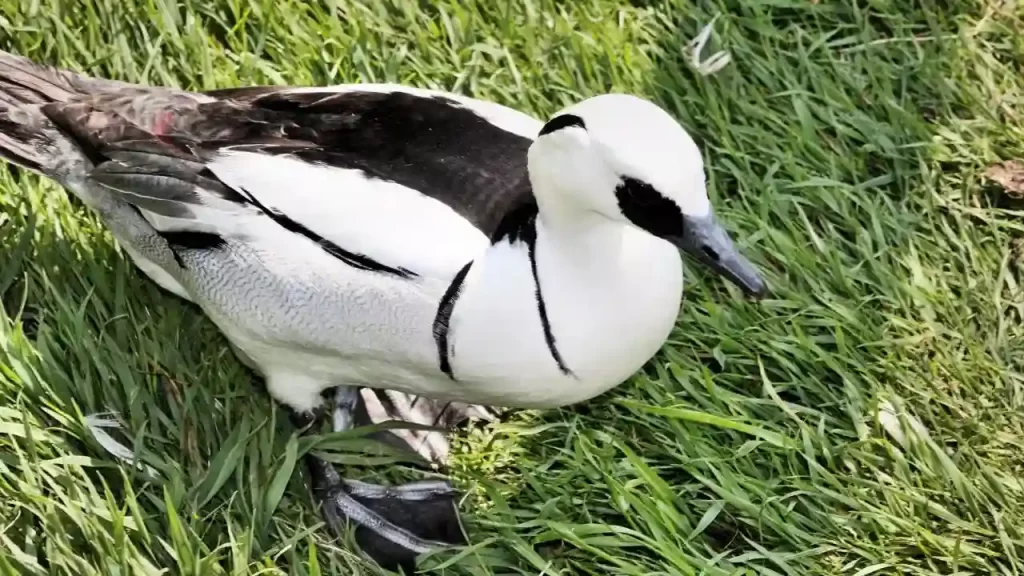
Scientific Classification of the Smew
- Kingdom of the smew: Animalia.
- Phylum of the smew: Chordata.
- Class of the smew: Aves.
- Order of the smew: Anseriformes.
- Family of the smew: Anatidae.
- Genus of the smew: Mergellus.
- Species of the smew: M. Albellus.
- Binomial name of the smew: Mergellus Albellus.
Description:
The smew is a medium-sized diving duck. The body is greyish brown, the wing and breast are black.
There is a small amount of white on the throat. It can also be separated from the mallard by the browner head and neck, and a short bill.
Smews have a large “diving sack” which hangs beneath their wings and helps them to dive.
The sow’s head is large and heavy, with long, heavy, dark bills, which are used to probe for fish or other underwater creatures. The tail is rounded. The sexes are similar.
The smew was also known as the “water-hen”, “water-pheasant”, “water-turkey”, “water-guineafowl”, “water-swan” and “moulting bird”. The smew is native to Eurasia.
It breeds in rivers, streams and small lakes. It winters in saltwater. It is found in the Mediterranean, the Black Sea and in northern India.
Like other diving ducks, the smew is often found in dense aquatic vegetation and in winter in brackish waters. It can be quite wary, and so a smew hunter must be patient, quiet and patient.
Habitat and Distribution:
Smew are typically found in rivers and small lakes, and in marshes.
Migration and Breeding:
This species is sedentary year-round, apart from breeding and migration. During the breeding season, smews move to wetlands. The smew usually breeds in April.
Eggs can be found in May or June. The female smew lays around 12 to 20 eggs, and usually two clutches per year.
They are laid in nests on the ground, or in water. Hatching usually takes place in 12 to 16 days. Clutch size may vary from 3 to 6. The male and female smew can interbreed.
Diet:
The smew feeds on invertebrates, such as aquatic insect larvae, molluscs, and crustaceans. It sometimes eats small fish. Its bill is used for plucking prey, rather than for spearing.
Smew have been observed to feed on insects in dry sand or mud, in a fashion similar to the Eurasian woodcock (Scolopax rusticola). They may be important food for pike, bream, catfish and small fish.
They swim and dive rapidly but rarely swim long distances. They stay underwater for up to 15 seconds and have excellent underwater vision.
They swim to the bottom of a body of water, then dive below the vegetation to find food. After about 20 seconds the smew surfaces and hovers above the surface, ready to dive again.
In some places they are regarded as pests because they destroy aquatic vegetation.
Behaviour:
This species has a very secretive behaviour, and spends much of its time underwater. It is normally found near the water’s surface, and it will often submerge completely.
The young smew’s wings are shorter than those of the adult, which allows it to dive and stay underwater. It will sometimes dive to search for its food.
It will also submerge to hide when an enemy approaches. The male smew’s song is deep, deep, rippling and can last for several minutes. It can have several variations, depending on the context.
The female smew sometimes produces a shrill, sharp, deep, repeated whistle. The smew’s throat-clapping behaviour is also unique and somewhat frightening. The throat-clapping is used for calling.
It is sometimes done when the bird wants to warn a younger smew, when the smew is trying to warn another bird.
When the smew wants to draw a predator’s attention away from the young or mother smew. The throat-clapping noise is produced by rapidly compressing and expanding the mandible of the bill.
Smew can be very nervous, and this nervousness shows itself in its behaviour. They are often very agitated when they are near water, and will try to escape by submerging.
Diving and Flight:
The smew dives by first diving to the bottom of the body of water, then swimming down and submerging.
The bird usually hovers above the bottom for several seconds, or to look for a food source, and then continues diving. After 10 to 20 seconds it resurfaces.
It may repeat this process several times. It may stay underwater for over 20 seconds, so that it can dive deeply. The smew uses its tail and wings to swim.
Diving:
Diving, or submerging, is the main activity of the smew. It may submerge for up to about 15 seconds to get to the bottom of a body of water. After about 20 seconds the smew resurfaces.
It may repeat this process several times. Snow’s eyes are large and the pupils are slanted, allowing them to see well underwater.
The eyes of smew are located higher on the head than the eyes of most diving ducks. Its body is used to support its large bill, which is used to probe for prey.
Smew use their long, round wings for propulsion. The smew can dive deep under water to a depth of 8 to 12 metres.
This may be about as deep as the wings extend, and the head and body of the bird is kept out of the water. The tail may help to balance when diving.
Flight:
When flying through the air, the wings and body of the smew curve upwards. They normally flap their wings at a slow pace, and not much faster than that of the wind.
The smew has a heavy, somewhat noisy, flight pattern. It will usually fly in a V-formation, so that it can stay close together. It can fly backwards, forwards, sideways, and diagonally.
The smew will usually perch, sometimes for a short time. It is generally solitary, except in breeding season. When the smew is in flight, the wings do not move rapidly.
But they are flapped several times during the flight. The wings are fairly broad, and when the bird’s wings move they curve upwards.
Eggs and Young:
Like many waterfowl, the smew is monogamous, and the female does not incubate the eggs. It will stay at its nest all day, and may return to it at night.
When the smew is about three days old, it leaves the nest. The mother smew will not stay with the chicks.
And generally takes the young to a different location than the location where she hatched them. The young leave the nest usually around four or five days after hatching, and then join the parents.
The smew hatches from a few to six eggs, but normally the clutch is three to six. It has been observed to lay eggs as early as January and as late as July.
The smew’s clutch is relatively large, typically up to 20 eggs. The size of the clutch is correlated to the amount of food available.
When food is abundant the female lays smaller clutches. In the wild, there is normally an 80 to 90% mortality rate for the young.
The female smew is the larger of the two parents, and it will defend her territory and eggs. Smew are often found in pairs, pairs may be bonded for life.
Pairs will typically maintain territories of about 70 to 110 hectares, and sometimes maintain a territory with multiple pairs of ducks.
Smew usually only nest near water or in open marshland. Smew also nest near the shore.
Voice:
A typical loud, deep-sounding, repeated, low whistling noise. This is produced by rapidly compressing and expanding the mandible of the bill.
Mandarin (Aix Galericulata)

Scientific Classification of the Mandarin
- Kingdom of the mandarin: Animalia.
- Phylum of the mandarin: Chordata.
- Class of the mandarin: Aves.
- Order of the mandarin: Anseriformes.
- Family of the mandarin: Anatidae.
- Genus of the mandarin: Aix.
- Species of the mandarin: A. Galericulata.
- Binomial name of the mandarin: Aix Galericulata.
About of Mandarin:
Mandarin duck, a flightless bird from mainland China, and the type species of Aix, the type genus of duck. It has a short, broad, flat head.
The neck is usually extended to form a long, pointed, and pointed bill. The plumage of the mandarin duck consists of black, grey, and brown.
Its upper parts are grey, while its lower parts are dark grey, and it may have white on its neck and face.
The mandarin duck is omnivorous and is generally found in a variety of habitats, usually near water.
However, it prefers dense forests and wetlands and avoids open, grassy areas. It migrates and nests in large communal colonies, and the species is monogamous.
The mandarin duck feeds mainly on aquatic plants, seeds, fruits, and insects, though they will eat small amounts of meat.
It breeds in wetlands, often nesting in tall grasses, where they prefer to forage near water.
The mandarin duck lives in colonies of up to 10,000 individuals, and individuals may be found at any time of the year.
The breeding season, which begins in the early spring, is short. Once the nestlings fledge, their parents will search for a breeding territory to begin a second season of breeding.
Conservation:
In China, the species is listed as an endangered species, and a total of 1,000 to 2,000 individuals are thought to be left.
They are primarily threatened by habitat destruction due to agricultural development and construction.
The populations of mandarin ducks in Sichuan, Chongqing, Guangxi, Guangdong, and Hainan provinces are decreasing due to this.
The mandarin duck is not listed on the IUCN Red List, but it is listed as vulnerable by the BirdLife International. In captivity, the species can reach lifespans of 25 to 30 years.
Description:
The mandarin duck is a small to medium-sized bird that is long. The body of the duck is covered in dark brown and brown feathers. It has a short, broad, flat head. Its bill is short, pointed, and sharp.
Its neck is usually extended to form a long, pointed, and pointed bill. Its beak is black, but is sometimes coloured with black, or is brown on the underside.
The body is covered in dark grey feathers, and the tail is long and pointed, as well. It may have a white band on its neck and face.
It has a black mask around its eye, a black, yellow-green, or greyish green-coloured bill, and a yellow or brown, iridescent tail. The legs are dark grey or green.
It has four pairs of webbed feet and two pairs of functional toes. The mandarin duck weighs about.
Its call is a raucous, deep croak, and can be heard for up to 10 to 12 seconds at a time. The species also gives a whistling or warbling sound when it is disturbed.
Distribution:
The mandarin duck is native to East Asia, and prefers regions where the precipitation is more than of rain per year.
It is found in China, northern parts of South Korea, Japan, and in southern parts of Russia.
This species is found in a variety of wetland habitats, and breeds in areas such as forests, swamps, marshes, ponds, lakes, and paddy fields.
It prefers dense forests and wetlands and avoids open, grassy areas.
In China, it lives in the provinces of Jiangsu, Anhui, Zhejiang, Fujian, Jiangxi, Sichuan, Gansu, Inner Mongolia, Chongqing, Hubei, Hainan, Henan, Guangdong, Guangxi, and Shandong.
It is also found in Japan and in southern parts of Russia. In Taiwan, the species is found in the counties of Yilan, Hualien, Yunlin, Taitung, Chiayi, Kaohsiung, Pingtung, and Tainan.
It is thought to be rare in the wild in these places.
Behaviour and Ecology:
The mandarin duck is omnivorous, feeding on a variety of plant material, fruits, seeds, insects, and some small amounts of meat.
It mostly eats aquatic plants, including aquatic grasses and bamboo, and fruits and seeds of plants such as willow, poplar, and bramble. It will also consume invertebrates.
The species will gather food by walking through its habitat, and then return to where it found it. Its dietary preferences are thought to change seasonally.
It breeds in the early spring in the early spring. The mandarin duck will seek out high, tree-covered areas to nest.
Nests are large and usually placed in dense grass, and often a single nest may contain 30 to 50 individuals.
This species breeds in small colonies of 5 to 10 pairs, and a colony may be seen in summer. Breeding is polygynous, and the father and mother will share parenting duties.
Breeding females are the ones to incubate the eggs, hatch the eggs, and raise the nestlings. The fledging period is a long one, lasting from six weeks to four months.
Once the nestlings are fully grown, the pair will search for a new breeding territory. The species is monogamous. It prefers a social colony life, and a single pair will remain in their territory.
As these individuals are highly territorial, they will use aggressive displays to defend their nests. Their territories are located in tree-covered areas.
The mandarin duck is thought to be relatively stable in terms of population size. It breeds in spring, but may start migrating in September and remain away until the next spring.
There are multiple records of the mandarin duck being attracted to lights during the night.
One study from 2013 found that the species would flock near human activity at night, possibly because people light up their houses at night.
Some studies have indicated that the species will migrate more frequently when there is a greater threat of a bad breeding season.
Threats:
The species is mostly threatened by habitat destruction due to agricultural development and construction. It is also threatened by overharvesting, though not by overfishing.
Hunting is another factor in the reduction of populations. One survey of the species in the Jiangsu and Zhejiang provinces found an average of one mandarin duck per land.
But the species was found on smaller swamps and farmland. Over the last 50 years, the amount of open land in the Jiangsu and Zhejiang provinces has increased at a rate of.
This increase in land use is one of the reasons that the species is declining. It is also threatened by natural disasters, such as cyclones and fires. It is also impacted by diseases and parasites.
Another threat is the loss of its habitat, as human development has decreased the amount of wetlands it is able to use.
The mandarin duck was found on more land in Jiangsu and Zhejiang provinces in 2013.
Due to the population decrease of the species, plans were made for the creation of a protected area in the Nantong, Jiangsu province.
That would encompass , or more than five times the amount of area currently occupied by the species. The first phase of the project was expected to cost 1.5 million yuan.
The next phase would include a conservation programme, which would cost 0.35 million yuan.
As the species is now listed as an endangered species, the authorities in Jiangsu province placed the mandarin duck under protection in the early 1990s.
However, some parts of the species’ habitat were lost during this period due to human development.
In 1994, Jiangsu authorities began a project to reforest areas of swampy grassland around Hangzhou and Nantong to increase their potential for habitation by the mandarin duck.
Status and Conservation:
The conservation status is determined as “vulnerable” by the IUCN. The Chinese government has listed the species as a protected species and has included it on the Red List.
It is also listed as a vulnerable species by BirdLife International. As of 2014, there were 2,876 mandarin ducks recorded as being in captivity.
The number of captive populations of the species has been steadily increasing over the past few years.
The species is primarily threatened by habitat destruction due to agricultural development and construction. A total of 1,000 to 2,000 mandarin ducks are thought to be left in the wild.
The majority of their populations is found in Sichuan, Chongqing, Guangxi, Guangdong, and Hainan provinces. They are also located in Jiangsu and Zhejiang provinces.
One population, with 100 to 200 individuals, is found in Taiwan. The species is under protection in a number of countries, including Japan, Russia, and Germany.
A study done in Jiangsu province in 2013 estimated that the population of the species was 1,200 to 1,400 individuals. A 2019 study identified that genetic diversity in the species had declined.
Baikal Teal (Anas Formosa)

Scientific Classification of the Baikal Teal
- Scientific Name: Sibirionetta
- Formosa Kingdom: Animalia
- Phylum: Chordata
- Class: Aves
- Order: Anseriformes
- Family: Anatidae
- Genus: Sibirionetta
- Species: Sibirionetta Formosa
- Common Name: Baikal Teal
Description:
Baikal Teal is one of the oldest birds in the world, first found in the prehistoric lake beds of the New World.
Baikal Teals belong to the subfamily Anatinae, which includes a group of species of dabbling ducks.
Their species name, “Formosa”, is of Latin origin and means a small duck-like bird of the Far East.
Their scientific name is Anas formosa. This name is in reference to the form of their beaks and feet.
In addition, their name is given in reference to the freshwater lake of the same name in Mongolia, China, and Siberia, Siberia, Russia.
This lake is the world’s deepest at over 2250 metres, and its waters are almost the same temperature as those of the Arctic Ocean, making it the ideal place for migrating species of wildlife.
This lake is also home to many species of animals and plants, and it is one of the largest and most intact wilderness areas in the world.
Diet and Feeding:
Baikal Teals are primarily herbivorous and feed on aquatic plants, algae, and sedge.
They are well known for their ability to dive into water and collect submerged plants. They are opportunistic feeders and eat not only land plants but also insects.
Social and Family Life:
Like most ducks, Baikal Teals are social birds. They live in groups in winter and form large flocks in summer, and when they do, they will often stay with the same group year after year.
They remain together in breeding groups for much of the year, and they usually do not separate when they are migrating.
They tend to build their nest on top of floating logs or other floating debris. The male will guard the nesting site and fight off any male competitors in order to prevent them from poaching the eggs.
Reproduction and Lifespan:
Baikal Teal reproduce from November until the following April, and the male and female do this in different periods of the year.
In the winter, they will pair up and find an ideal location to raise a clutch of approximately 10-25 eggs.
The female will not lay the eggs in the coldest months, and she will tend to lay her eggs in the shallow waters of the lake to keep them warm.
She will spend about a week sitting on the nest with the eggs. She will eat and sleep in her nest, and she will use her bill and feet to push the eggs out from beneath her while she is sitting on the nest.
The male, on the other hand, will spend the winter either building his own nest or searching for an abandoned Baikal Teal nest to use.
He will remain with his flock year-round, and he will stay with them as long as he is able to defend them from predators.
If he can no longer protect them, he will separate from them to form his own group, and he will stay with this group year-round until he is able to reproduce himself.
In the spring, he will go back to the area where he was hunting in the winter in order to raise the young. The female will continue to lay eggs throughout the summer.
The young hatch in September and October and then remain with the mother for a month or two. The young will then disperse from the mother to find their own territories. This happens once a year.
Physical and Size:
Baikal Teals weigh between 30-50 grams (0.95-1.36 oz). They grow to lengths of between 10-13 inches and are between 3-4 inches in width.
They will usually grow their feathers year-round, and they will use them to form their plumage. They have a very characteristic plumage, and they can be identified in the field by its shape and pattern.
The upper parts of the Baikal Teal are bright green and light yellowish-green, and the flanks and the belly are buff colored with yellow-green spots.
The eyes of the duck are dark brown. The bill is black with yellow coloration, and the feet are orange.
Communication and Perception:
Baikal Teals are quite vocal, and they use their vocalisations to communicate with each other. They can communicate in different ways.
They will waddle when they are disturbed, and they will use this waddle to communicate with each other.
When they are disturbed, the Baikal Teal will raise its head and look back at the disturbance, and this behaviour can be used to communicate with other ducks.
They are also well known for their ability to dive into the water to get a hold of vegetation. Baikal Teals are omnivorous, and they will eat grass and aquatic plants when they are available.
They are opportunistic and feed on insects when they can be found. Their strong feet make them good swimmers.
And they can be found in shallow water where they can submerge for long periods of time. Like many other ducks, Baikal Teals rely on their keen eyesight to find their food.
Their eyesight is good, and they can see objects at a distance of around two kilometres. Their eyesight helps them to see underwater, and they can also see through the water.
This makes them good swimmers, and they can be found on their own in shallow water. They use their eyesight to monitor the surroundings, and they use their eyes to see any potential dangers.
Baikal Teals have excellent hearing. Their eyesight is very sharp, and they rely heavily on their hearing to help them to survive.
Their acute hearing allows them to detect the slightest vibrations in the surrounding water. They hear better underwater than on land.
Behaviour:
Baikal Teals are gregarious birds and tend to live in groups. During migration, they will form large flocks of hundreds of thousands of birds that can travel at speeds of around 140 km per hour.
They will sometimes stay with these large groups of birds for days at a time before they depart on their migration to breeding grounds.
These groups will remain together as a single group of birds for some time after they have arrived on their breeding grounds.
And they will not split up and scatter on their own until they reach the breeding grounds.
When a Baikal Teal wants to find a territory for himself, he will search for one and will try to keep away other male birds of his species.
If he is not able to find a good territory, he will tend to settle down with another group and stay with them year-round.
Threats:
The Baikal Teal (Anas Formosa) has been classified as Vulnerable on the IUCN Red List of Threatened Species (v1.3) since 2012.
In 2016, it was listed as a vulnerable duck on the Red List of Threatened Wildlife in China. This duck was once widespread in the north of Sakhalin. They were believed to be extinct in 1934.
In 1975, a single Baikal Teal was observed near the Sakhalin peninsula. Since the Sakhalin peninsula is in Russia, this duck is no longer an endangered species.
Mating and Breeding:
Male Baikal Teal are territorial and defend their territories from other males. They can be seen calling in pairs or flocks. They build a nest on land or on a platform.
Their nests are built with vegetation, sticks, and mud. They raise one or two eggs in the nest. The eggs are white with light brown spots.
The male guards and protects the nest from predators, especially in the nest. The female is not territorial, but she will usually follow the male around if he calls her.
Conservation:
Baikal Teal are hunted and collected for food and feathers. They also are killed by poachers looking for goslings.
They are protected from poaching in Russia by a protected-species act that stipulates that anyone with information about the illegal trade must be reported to the Russian government.
However, poaching is rampant in China, and poachers are known to sell the goslings and eggs in China for food.
Baikal Teal are killed by water divers to make fishing nets and by catfish and bream poachers who remove the ducks to use for bait.
Baikal Teal are known to be popular with local hunters for their meat and for their feathers.
Status and Distribution:
The Baikal Teal (Anas formosa) is a migratory duck that is considered a subspecies of Baikal Teal (Anas formosae). It breeds in northeast China and Korea.
It winters along the Amur River and Ussuri River. It breeds north of the Amur River, but winters in the Amur River and Ussuri River.
The Baikal Teal has been considered a separate species since 1995, but is no longer considered a subspecies of the Baikal Teal.
There are approximately 200,000 of these ducks and about 3,000 nesting pairs.
Hooded Merganser (Lophodytes Cucullatus)
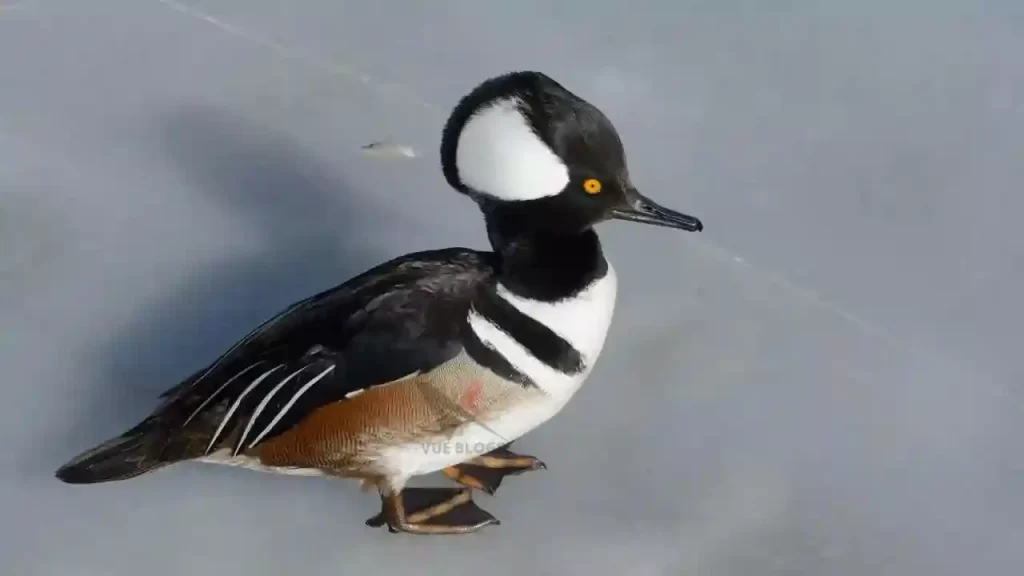
Scientific Classification of the Hooded Merganser
- Scientific Name: Lophodytes Cucullatus
- Kingdom: Animalia
- Phylum: Chordata
- Class: Aves
- Order: Anseriformes
- Family: Anatidae
- Genus: Lophodytes
- Species: Lophodytes Cucullatus
- Common Name: Hooded Merganser
Description:
The Hooded Merganser is a long-legged water bird with a blackish hood, usually located near water. Merganser is one of the most common duck species in the northern regions of the world.
Hooded Merganser is one of the first waterfowl to take up to the breeding season. The young birds are also known as merg, mergrans, and mergys.
As the mergansers are generally found with their eyes hidden and the beak pointed downwards, they appear to be sleeping.
However, when they open their beak for breathing, they are actually ready to snap at prey. The merganser is the only duck species that does not have the ability to retract its tongue.
The merganser is known for its strong beak and its large gular pouch, which is used to store air during diving. They feed on fish, mollusks, insects, and aquatic plants.
A single merganser can produce about four to six chicks a year. The females spend more time incubating the eggs than males.
Hooded Mergansers spend much of their time in the water for hunting. While they are nesting, they usually stay on the ground in large flocks. The adult is mainly nocturnal.
African Pygmy Goose (Nettapus Auritus)
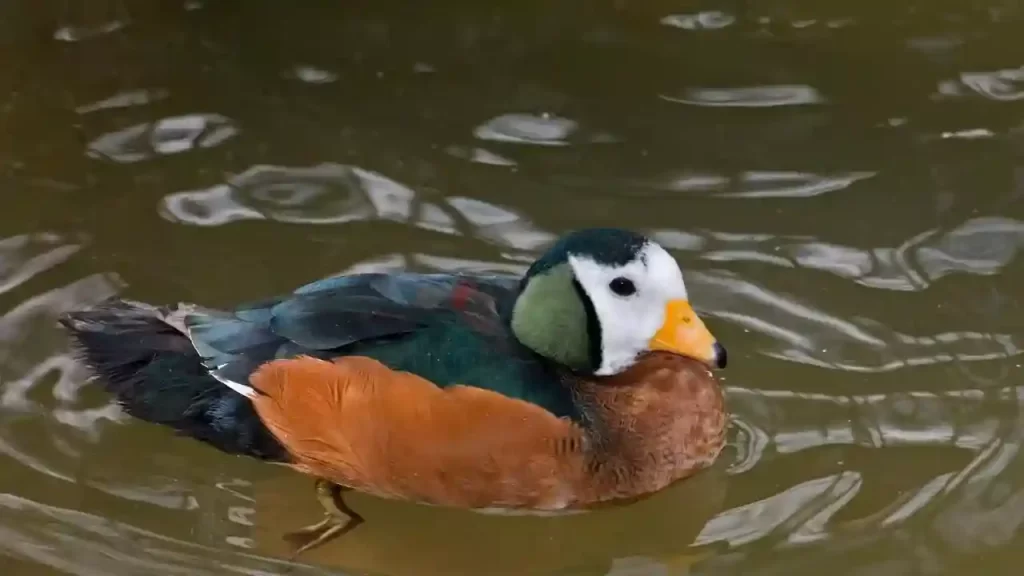
Scientific Classification of the African Pygmy Goose
- Scientific Name: Nettapus Auritus
- Kingdom: Animalia
- Phylum: Chordata
- Class: Aves
- Order: Anseriformes
- Family: Anatidae
- Genus: Nettapus
- Species: Nettapus Auritus
- Common Name: African Pygmy Goose
Description:
The African pygmy goose is the smallest and most abundant member of the order Gruiformes, a family of birds that includes geese, swans and allies.
Pygmy goose are found across a broad geographic range and are very common in wetlands and savanna.
They typically inhabit a wide variety of habitats with water, and even if there is no water they may be found in dry river beds.
They use natural pools and small water bodies to breed, but also sometimes use man made water sources and sometimes nest in areas of open water.
These geese are tiny, with a length of about 30 cm. They have a greyish-white plumage with a black head and chest. A large white shoulder patch is often present, which is bordered by black feathers.
This patch, which can extend up to 10 cm, makes them a familiar sight to birdwatchers and provides identifying features for identification.
Males also have a distinctive red comb. The female has less extensive wing markings and a larger crest, and the plumage is more plain.
Long-tailed Duck (Clangula Hyemalis)
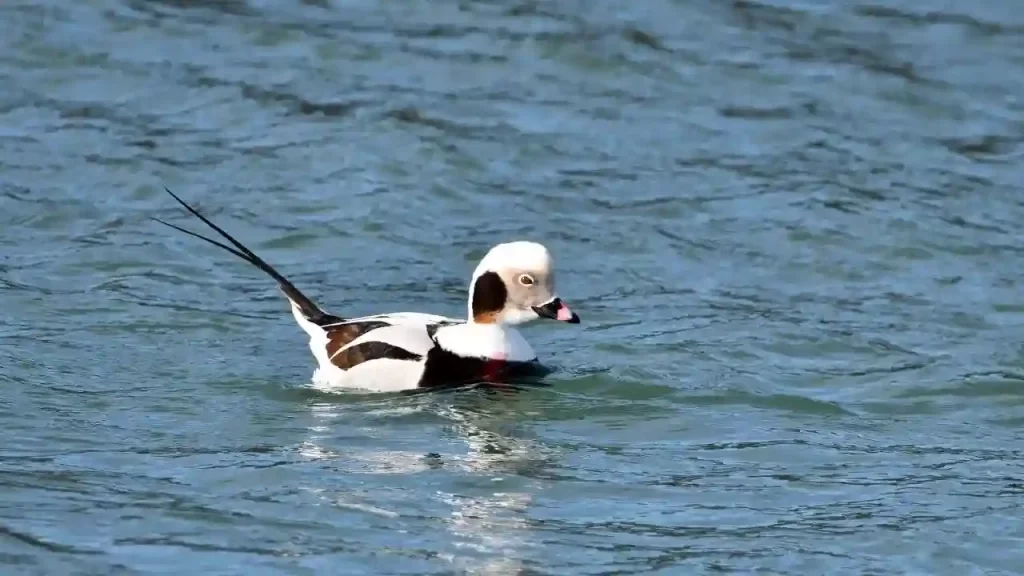
Scientific Classification of the Long-tailed Duck
- Scientific Name: Clangula Hyemalis
- Kingdom: Animalia
- Phylum: Chordata
- Class: Aves
- Order: Anseriformes
- Family: Anatidae
- Genus: Clangula
- Species: Clangula Hyemalis
- Common Name: Long-tailed Duck
About of Long-tailed Duck
The Long-tailed Duck is also called Long-tailed Shelduck or Shelduck because of their long neck and tail. It is one of the only species of ducks found throughout most of the world.
Other than the Long-tailed Duck, all ducks belong to the family Anatidae. Ducks are the closest relatives of swans and geese. Its feathers are black and white.
It has a long thin bill, yellow legs, a thin greenish, brownish, greyish-white or cream-colored body with a white belly, pinkish eye and a long greyish tail with a black tip.
Males are longer, about 14-15 inches, have a longer bill and black crown, a white neck, a yellowish grey or yellowish-white face and head, a yellowish-white back and a dark black belly.
Females are shorter, about 13-14 inches, have a shorter bill and a black crown, a greyish-white or cream-colored back and a white belly.
Red-crested Pochard (Netta Rufina)
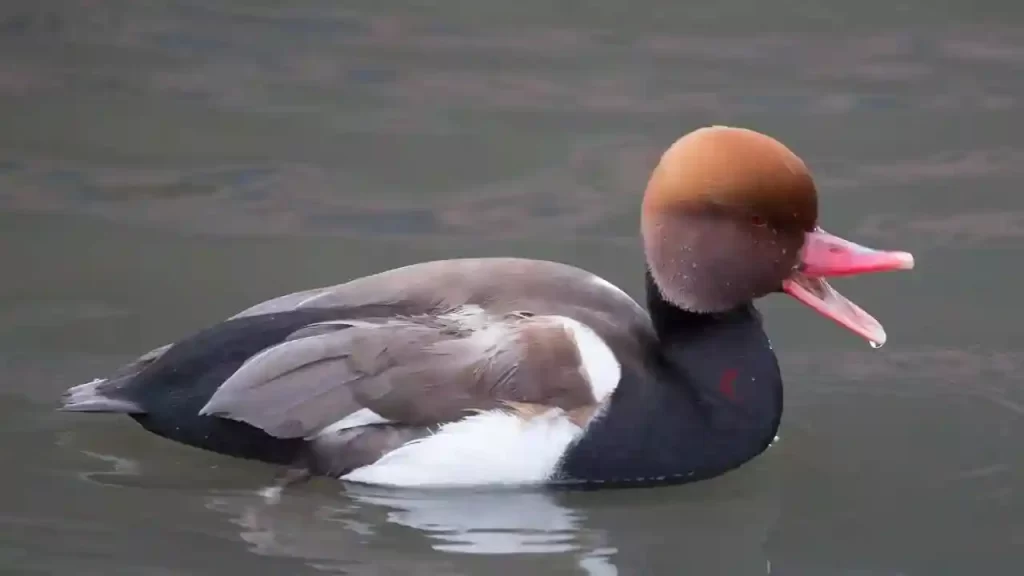
Scientific Classification of the Red-crested Pochard
- Scientific Name: Netta Rufina
- Kingdom: Animalia
- Phylum: Chordata
- Class: Aves
- Order: Anseriformes
- Family: Anatidae
- Genus: Netta
- Species: Netta Rufina
- Common Name: Red-crested Pochard
Description:
The Red-crested Pochard is a species of Pochard found in the northern hemisphere in large flocks during the winter and spring.
They are often seen in open habitats with vegetation, either in areas with lakes and ponds, or near rivers and coastal areas.
When migrating, the birds form “loose flocks” in the early morning and late afternoon.
They follow their food habits and stop at lakes and rivers to hunt for fish or waterfowl. They also feed on plants, seeds and invertebrates.

